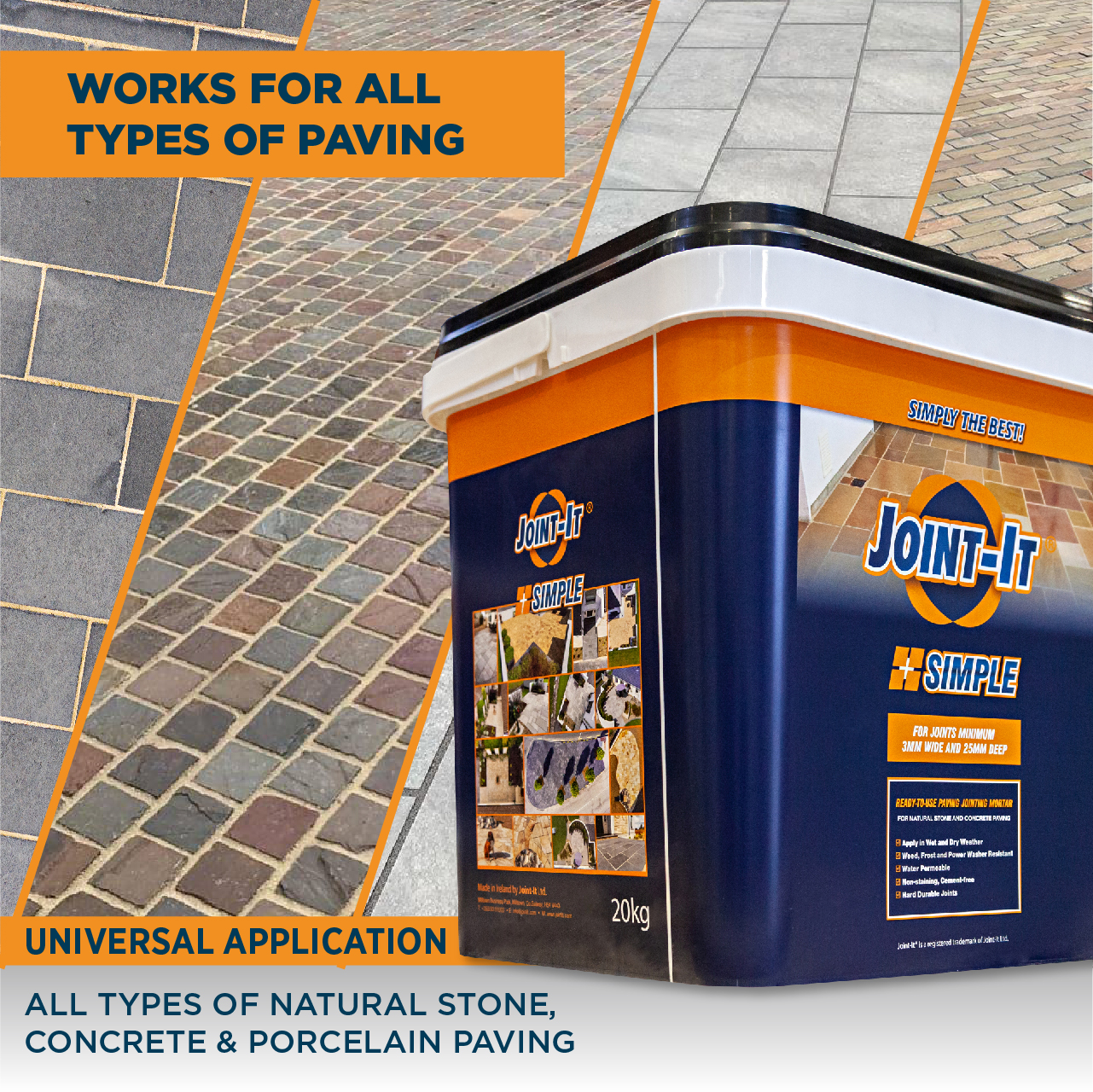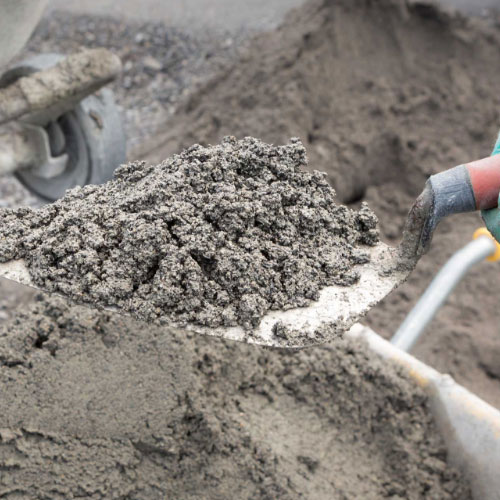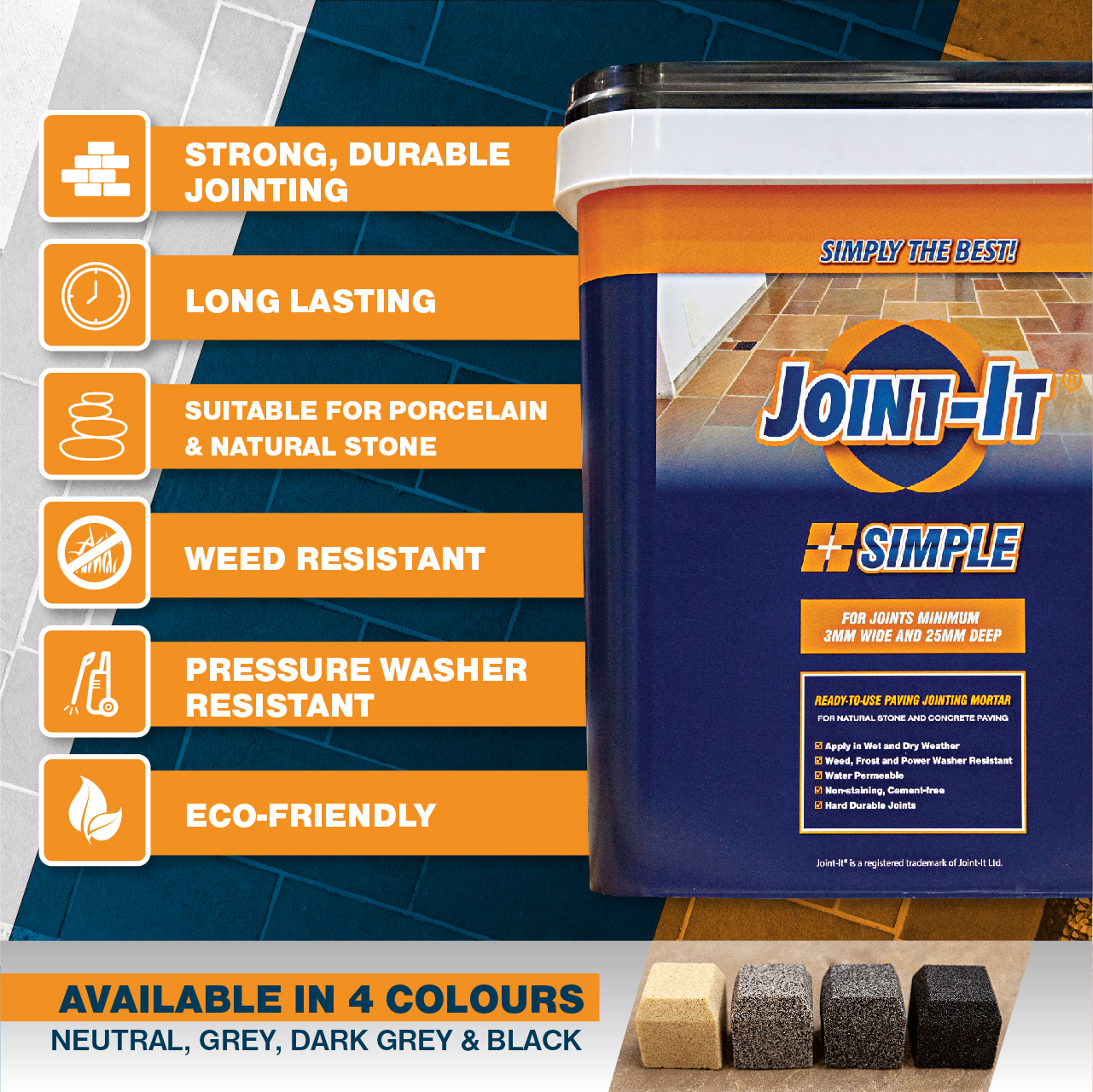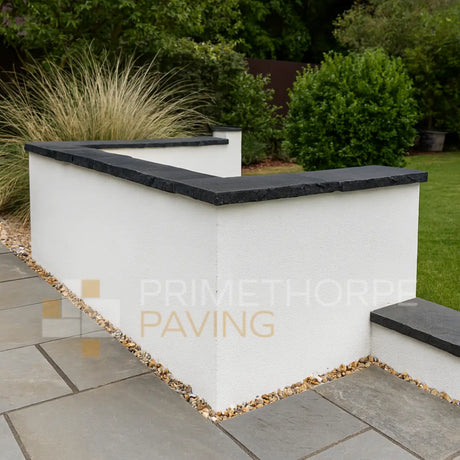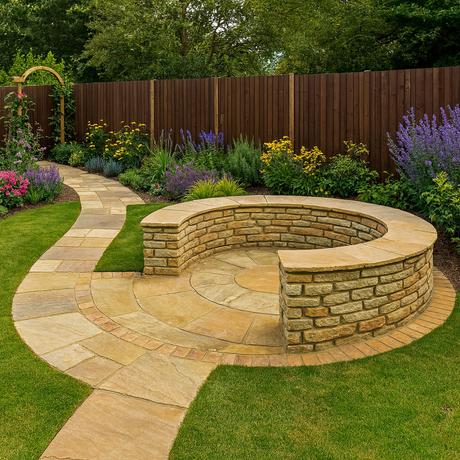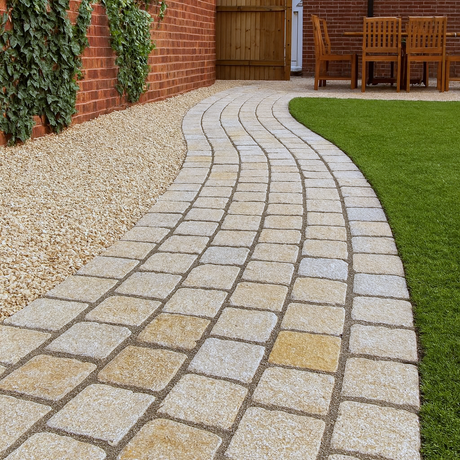Creating a patio space used to consist of 3 main elements:
- The Groundworks - creating a strong foundation for you to lay your patio.
- Laying the slabs on a mortar bed
- Filling the gaps between your slabs to bond them together.
Unfortunately, the first two elements of patio installation are tricky and no-one has created a way to make these any easier, but the third element - filling the gaps after laying your slabs - has been re-invented in recent times and is now almost an afterthought after completing the first two parts. This is because of the invention of products known as jointing compounds.
If you're looking to fill the gaps between your paving slabs, there are two main methods for doing this - the traditional method and the modern method. The traditional method involves creating a mortar mix and filling the gaps by hand: a gruelling task that takes an unbelievable amount of time, but thanks to the invention of jointing compounds - a resin-based, brush-in grout - the modern method can be completed in 10% of the time! The final step of installing a patio is no longer the time sink it used to be.
In this article, we'll explain what each of these methods are and why the traditional method is rarely used. We'll also highlight the best products for the job.
Why is the traditional paving jointing method no longer used?
The traditional method of filling the gaps between paving slabs with a mortar mix is rarely used nowadays. It's incredibly time consuming and difficult to get right. Jointing compounds are much easier to use and give a much better finish.
The original method of cement-based patio jointing requires creating a mortar/grout mix by hand: take sand, cement and water together in the correct ratio - which is a tough task in itself - and using the resulting mixture to fill the gaps between your slabs, inserting the mix into each gap, one painful joint at a time.
This was a time-consuming process that takes hours, if not days, to complete. Cement based jointing also shrinks as it dries, meaning that even after you've spent the time producing a fantastic finish, if the joints are slightly underfilled, then you can end up having to redo the whole thing anyway. The amount of wasted time is painful to think about.
So, up stepped a handful of very clever people to try and find the ultimate solution for all this wasted time. And the end result? Jointing compounds!
So what is a Jointing Compound?
Jointing compounds are used to fill the gaps between paving slabs. It's a type of "sand" that you simply tip out and brush into the gaps between your paving, rather than having to fill each gap individually with a cement mortar.
They are a special type of product which combines sand with specific resin before vacuum sealing the product ready for instant use.
They are easy to use for DIYers: no mixing of component products, no need to get on your hands and knees and the resulting job is now something that can be completed in 10% of time it would have taken 10+ years ago.
Why choose a brush in grout for patios?
Jointing compounds are the best choice for a number of reasons:
- Jointing compounds are much easier to use and give a much better finish - No extra work on your hands and knees just for a sub-par finish.
- Jointing compounds come in a variety of colours to match your patio - no matter your taste and style, you will find something to suit.
- Jointing compounds are usually resin based, therefore do not run the risk of leaving cement stains on your patio.
- Brush in grout for patios is vacuum sealed, so they are reliable and ready for immediate use.
- And overall, just incredibly easy to use. You can't go wrong!
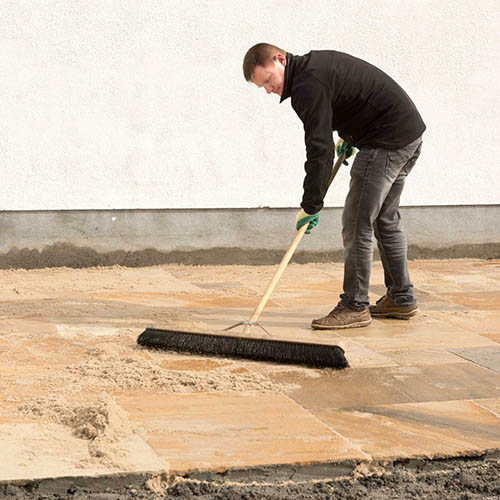
So what is the resin pointing method when using jointing compounds?
Using a brush in grout is the easiest and most effective method. All you need to apply the jointing compound to the gaps between your paving slabs is a stuff, long-handled brush or squeegee and lots of water.
The Steps:
- Wet the patio down thoroughly - the slabs need to be wet for the entire process. It's a quick process, but you should still be focused on the task at hand. On a hot day you will need to make sure it doesn't dry out, so take extra care to keep the hose on the slabs and ensure the area remains wet throughout.
- Dump the jointing compound out on your patio. Wet this down also so that the compound is wet. Don't worry about over saturating - you cannot use too much water. The wetter the better!
- Using the stiff brush or squeegee, brush the compound into the gaps in your patio. It's a good idea to have a 2nd person help you with a low-pressure hose. The extra water will create a suction effect, sucking the jointing compound into the joints giving you a nice level fill. Take care not to overfill the joints, but it should be easily avoided if you are using lots of water. The jointing compound should not come above the level of the slabs
- Once the joints are full, give the patio one more saturation. Completely wet the whole patio down a final time, washing excess compound away, before allowing to dry.
- Optional: It's not a bad idea to quickly go over each joint with a level bar, but if you used enough water, then it should not be needed.
- Leave to cure for 24 hours. Avoid walking on the patio for as long as you can while the resin in the compound cures.
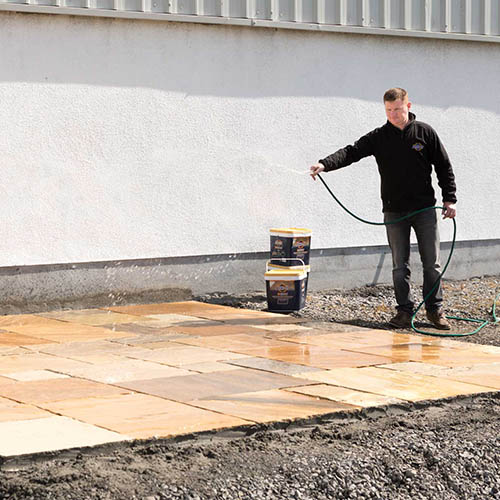
And that's it! Jointing compounds are the easiest and most effective way to fill the gaps between paving slabs and will save you hours of time and effort. Thanks to this invention, we can all enjoy our patios without having to worry about the unsightly gaps in between.
What are the best Jointing Compound products?
There are many Jointing Compound products on the market, but over our years in business we have found one overwhelming winner which offers the best balance between value, availability, quality, and simplicity for DIY-ers tackling their own garden:
Joint-IT Simple:
Joint-IT Simple is available in 4 colours, so will be suitable for any project. It consists of fine sand grains, so slides into the gaps with absolute ease and at its price point, in our opinion it is the best value for money out of any other compound on the market.
There are no tricks to master and there is almost no way you can get it wrong when using joint-it.
In Conclusion
Jointing compounds are the best way to fill the gaps between paving slabs and Joint-IT Simple is our top pick for those looking for quality without breaking the bank. 5/5 stars and a Primethorpe recommendation!
Thanks for reading! We hope this has helped.
If you have any questions, please don't hesitate to get in touch.


